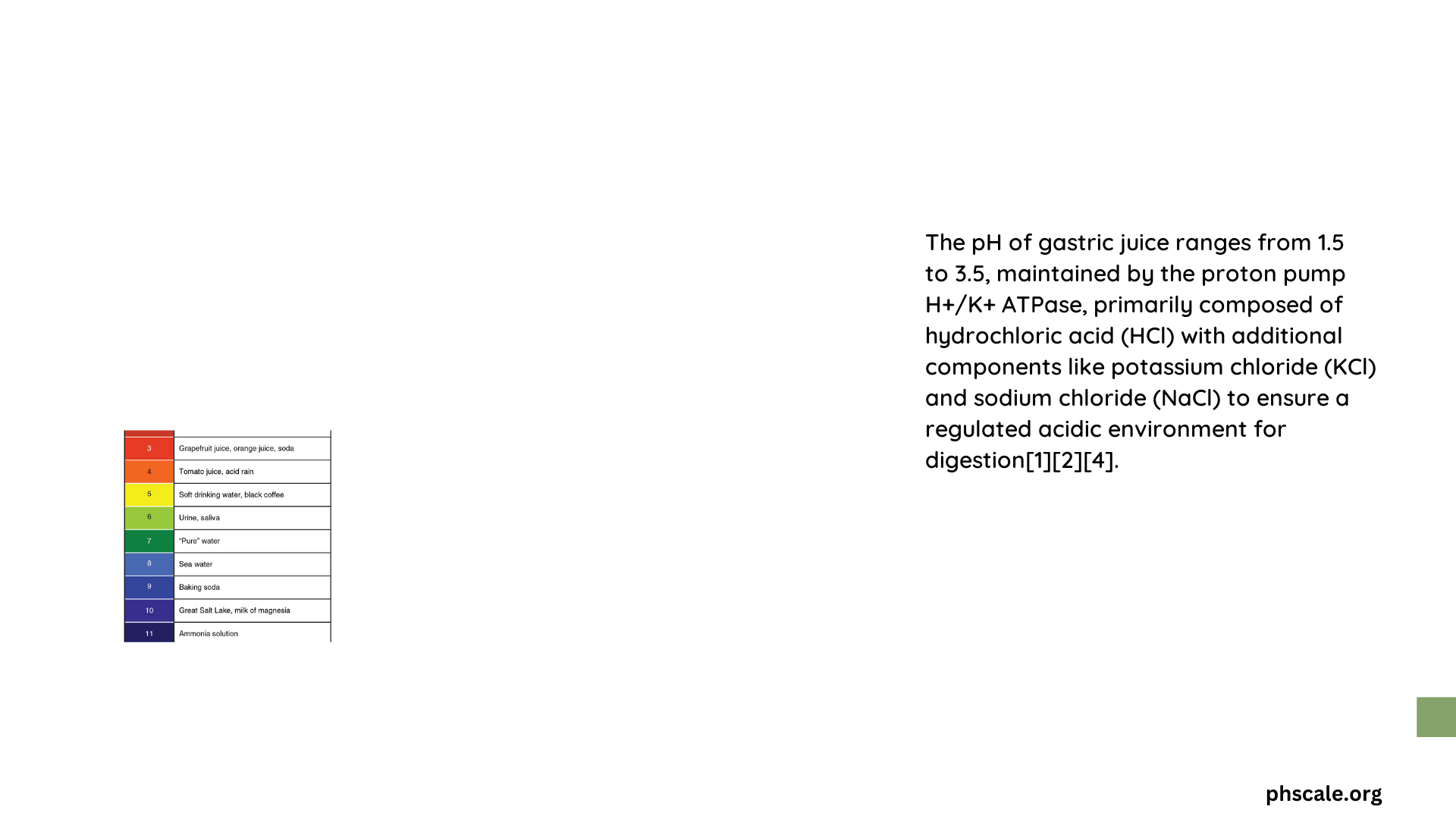The gastric juice pH scale is a crucial measure of stomach acidity, typically ranging from 1.5 to 3.5 in a fasting state. This highly acidic environment is essential for proper digestion and nutrient absorption. The pH can fluctuate based on various factors, including food intake and health conditions. Understanding the gastric juice pH scale is vital for assessing digestive health and function.
What is the Specific pH Scale Range of Gastric Juice?
The pH scale of gastric juice varies depending on physiological conditions:
- Fasting State: 1.5 to 3.5
- Postprandial State (after eating): Can temporarily rise to 6.0, but generally remains between 1.5 and 4.0
This acidic environment is maintained by the secretion of hydrochloric acid (HCl) from parietal cells in the stomach lining. The low pH is crucial for activating digestive enzymes and breaking down food particles.
How is the pH of Gastric Juice Measured?

Several methods and tools are used to measure gastric juice pH:
- Gastric Acid Secretion Test
- Involves inserting a tube through the esophagus into the stomach
-
Collects gastric fluid for pH measurement
-
pHstat Technique
- Used in research settings
- Incubates gastric juice samples at various pH values
- Measures residual enzyme activity over time
Tools for pH Measurement
| Tool | Description | Precision |
|---|---|---|
| pH Meters | Electronic devices providing precise readings | Up to one decimal place |
| pH Paper | Color-changing strips for pH estimation | Less precise, suitable for quick checks |
Challenges in pH Measurement
- Avoiding contamination or exposure to air
- Ensuring the measurement doesn’t alter the gastric juice pH
- Regular calibration of pH meters with standard buffer solutions
What are the Best pH Indicators for Assessing Gastric Acidity?
pH indicators for gastric acidity assessment include:
- pH Paper
- Changes color over specific pH ranges
-
Suitable for pH 1 to 5 for gastric acidity
-
Electronic pH Probes
- Part of pH meters
- Measure hydrogen ion concentration directly
- Accurate over a wide pH range
Limitations of pH Indicators
- pH Paper: Less precise, may not provide accurate readings in extreme pH conditions
- Electronic pH Probes: Require regular calibration, can be affected by proteins or other substances in gastric juice
How Does Gastric Juice pH Affect Digestion?
The pH of gastric juice significantly impacts digestion in several ways:
- Enzymatic Activity
- Pepsin (proteolytic enzyme) is most active at pH 2-3
-
Human gastric lipase (HGL) is stable and active between pH 2.0 and 7.0
- Optimal stability: pH 3.0 to 5.0
- Activity decreases rapidly below pH 2.0 or above pH 7.0
-
Nutrient Absorption
- Acidic environment denatures proteins, making them more accessible for enzymatic digestion
-
Enhances nutrient absorption in the small intestine
-
Implications for Gastrointestinal Health
- High pH levels can reduce digestive enzyme activity
- Very low pH levels can denature and inactivate enzymes
- Inappropriate pH can lead to:
- Impaired digestion
- Reduced nutrient absorption
- Increased risk of infections (in case of low acidity)
- Gastric ulcers and acid reflux (in case of high acidity)
What Factors Influence Gastric Juice pH?
Several factors can affect the pH of gastric juice:
- Food Intake
- Buffering effect of food can temporarily raise pH
-
Different types of food can stimulate varying levels of acid secretion
-
Medications
- Antacids: Neutralize stomach acid, raising pH
-
Proton pump inhibitors: Reduce acid production, increasing pH
-
Medical Conditions
- Gastroesophageal reflux disease (GERD): Can lead to increased acid production
-
Helicobacter pylori infection: May alter stomach acid levels
-
Age
-
Older adults may have reduced acid production, leading to higher pH
-
Stress
- Can increase acid production, lowering pH
How Can Gastric Juice pH be Regulated?
Regulating gastric juice pH is important for maintaining digestive health:
- Dietary Modifications
- Avoiding trigger foods that increase acid production
-
Consuming foods that naturally buffer stomach acid
-
Lifestyle Changes
- Eating smaller, more frequent meals
-
Avoiding lying down immediately after eating
-
Medications
- Antacids for short-term relief
-
H2 blockers or proton pump inhibitors for long-term management
-
Natural Remedies
- Ginger: May help reduce stomach acid
- Aloe vera: Can have a soothing effect on the digestive tract
What are the Consequences of Abnormal Gastric Juice pH?
Abnormal gastric juice pH can lead to various health issues:
- High pH (Low Acidity)
- Increased risk of bacterial overgrowth
- Impaired protein digestion
-
Potential nutrient deficiencies
-
Low pH (High Acidity)
- Increased risk of gastric ulcers
- Acid reflux and GERD symptoms
- Potential damage to the esophageal lining
Understanding and maintaining the proper gastric juice pH scale is crucial for optimal digestive function and overall gastrointestinal health.
